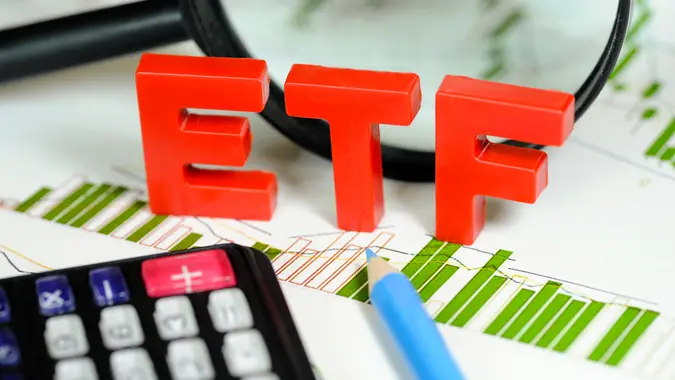Robo-Advisor vs. Target-Date Fund: Which is the Best Way to Invest?

Commitment to Our Readers
GOBankingRates' editorial team is committed to bringing you unbiased reviews and information. We use data-driven methodologies to evaluate financial products and services - our reviews and ratings are not influenced by advertisers. You can read more about our editorial guidelines and our products and services review methodology.

20 Years
Helping You Live Richer

Reviewed
by Experts

Trusted by
Millions of Readers
Whether you’re new to investing or have been diligently contributing to a 401k for years, you may be considering the best way to invest. Suppose you don’t want to use a financial advisor or wealth manager. In that case, you could look at a robo-advisor or a target-date fund to align your investment strategy more closely with your specific situation. But what’s the difference between these two approaches, and which one is right for you?
Here’s what you need to know.
What is a Robo-Advisor?
A robo-advisor is a computer program that recommends an investment strategy based on your specific financial situation. You will answer some questions about your age, risk tolerance, and goals. Based on the information you provide, the robo-advisor will recommend an investment approach and manage your investments accordingly.
What is a Target-Date Fund?
A target-date fund is an investment mix that changes according to your age. With a target-date fund, your asset allocation changes as you age, moving from investments with higher risk but a higher potential reward when you are young toward lower-risk investments as you near retirement (or college, in the case of a target-date 529 plan).
Is a Robo-Advisor or a Target Date Fund a Better Way to Invest?
As with most general investing questions, the answer to this one depends. Both robo-advisors and target-date funds have pros and cons, and neither is always right – or wrong – for anyone. Weighing the pros and cons of each will help you decide.
A robo-advisor uses more data to recommend your portfolio. It accounts for things like your risk tolerance – how aggressive you are comfortable being with your investments. Robo-advisors typically invest in exchange-traded funds (ETFs) to diversify your portfolio. These funds usually mimic one of the major indices, outperforming actively managed funds. On the downside, the fees for a robo-investor, while lower than those for a human financial advisor, are higher than those for a target-date fund.
Target-date funds usually have lower fees than a robo-advisor, but make sure you know what you’re paying. These are set-it-and-forget-it investments, as they automatically adjust your asset allocation to be more conservative as you get closer to your goal. However, they don’t consider your risk tolerance as a robo-advisor would.
It comes down to whether you prefer more personalization and control over your investments and don’t mind paying a little more or if you want to pay the lowest possible fees and let your investments remain on autopilot. Either way, investing your money will put you ahead of the game in the long run.
 Written by
Written by  Edited by
Edited by 

























